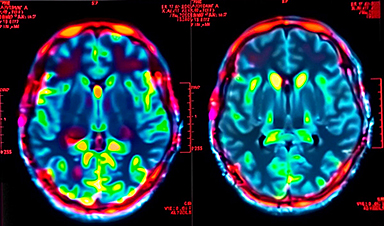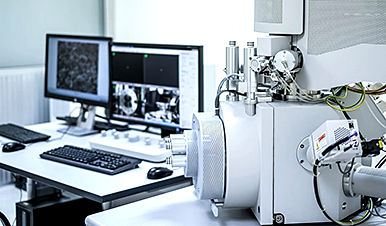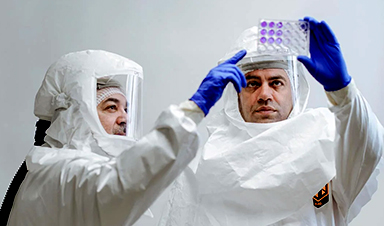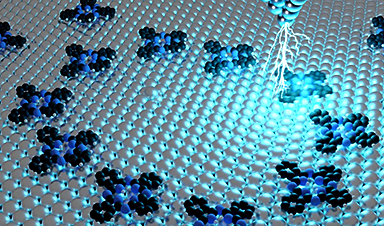| Notwithstanding the wishful thinking of certain irresponsible and incompetent public figures, the only options to control and deal with the spread of the Severe Acute Respiratory Syndrome Virus 2 (SARS-CoV-2) are fast, cheap, reliable, and portable means of diagnosing COVID-19 infection (the name of disease caused by SARS-CoV-2); therapeutics to treat the infected; and vaccines to rapidly build up immunization of large parts of the global population. | |
| In a previous Nanowerk Spotlight we covered nanotechnology-based approaches to testing for COVID-19 infections in high-risk individuals. Today we look at the role of nanotechnology in countering the conventional limitations of antiviral and biological therapeutics. Nanocarriers also have potential to design risk-free and effective immunization strategies for SARS-CoV-2 vaccine candidates such as protein constructs and nucleic acids. | |
| A review paper in ACS Nano (“Nanotechnology for COVID-19: Therapeutics and Vaccine Research”) provides systematic information on nanomedicine strategies employed to deliver small molecules, biologicals (specifically RNAi) and various combination therapies. Some strategies are also proposed for the rational development of this nanomedicine approach and its clinical translation. Since most of the COVID-19 vaccine candidates are sophisticated biological moieties (DNA, mRNA, recombinant proteins, engineered APCs etc.), the scope of nanocarrier delivery becomes highly pertinent. | |
| The authors first describe in great detail the current state of knowledge about the virus’s life cycle, pathophysiology and structure, and then address the organ systems primarily affected by SARS-CoV-2 (it affects the respiratory system first and then spreads systemically to the heart, liver and kidney). | |
Developing SARS-CoV-2 therapeutics |
|
| Today there is no exclusive antiviral treatment against SARS-CoV-2 although therapeutic and prophylactic strategies to deal with existing and potentially upcoming coronavirus infections are under development in research laboratories worldwide. | |
| Using recently available genetic information and protein structure modelling, several therapeutic strategies based on drug repurposing are projected for the immediate treatment of infected patients. | |
| According to the authors, target identification to halt the pathogenesis of the viral infection holds the key in this development: “Viral protease (3CLpro and PLpro), host cell produced protease (TMPRSS2), RNA polymerase (RdRp), interaction site of viral S protein with host receptor ACE2 are among the major targets identified for repurposing already existing antiviral molecules and new small molecules under development.” | |
| Other proposed strategies are targeting the SARS-CoV-2 surface S protein using neutralizing antibody (nAbs) and targeting the SARS-CoV-2 viral RNA genome using RNA interference (RNAi) or antisense oligonucleotides. | |
Developing a vaccine against COVID-19 |
|
| Massive efforts are being employed across the world to develop safe and effective vaccines and several vaccine candidates (see Table 1 in the review for details) have already made it to human clinical trials as a result of fast-tracked development strategies and advanced vaccine technological platforms (read more here in The New England Journal of Medicine: “Developing Covid-19 Vaccines at Pandemic Speed”). | |
| Similar to what researchers are doing in developing SARS-CoV-2 therapeutics, the target strategy for most of the vaccine candidates is to induce nAbs against the viral S protein, averting the ACE2 mediated host uptake. | |
| In the case of SARS-CoV vaccine development, higher nAbs titers and better protection was reported with S protein subunit vaccines when compared to any other target strategy. SARS/MERS vaccine development research suggests S protein subunits, RBD of the S1 subunit and S protein/gene as the most preferred target sites. | |
| The development of COVID-19 vaccine candidates are relying on several high-tech platforms including attenuated and inactivated viruses, replicating and non replicating viral vectors, DNA and mRNA, virus-like particles and recombinant protein-based approaches. |
Image Credit: Envato/ Amanda Scott
![]()
News This Week
Does COVID increase the risk of Alzheimer’s disease?
Scientists discover that even mild COVID-19 can alter brain proteins linked to Alzheimer’s disease, potentially increasing dementia risk—raising urgent public health concerns. A recent study published in the journal Nature Medicine investigated whether both mild and [...]
New MRI Study Reveals How Cannabis Alters Brain Activity and Weakens Memory
A massive new study sheds light on how cannabis affects the brain, particularly during cognitive tasks. Researchers analyzed over 1,000 young adults and found that both heavy lifetime use and recent cannabis consumption significantly reduced brain [...]
How to Assess Nanotoxicity: Key Methods and Protocols
With their high surface area and enhanced physicochemical properties, nanomaterials play a critical role in drug delivery, consumer products, and environmental technologies. However, their nanoscale dimensions enable interactions with cellular components in complex and [...]
Nanotech drug delivery shows lasting benefits, reducing need for repeat surgeries
A nanotechnology-based drug delivery system developed at UVA Health to save patients from repeated surgeries has proved to have unexpectedly long-lasting benefits in lab tests – a promising sign for its potential to help human patients. [...]
Scientists Just Found DNA’s Building Blocks in Asteroid Bennu – Could This Explain Life’s Origins?
Japanese scientists detected all five nucleobases — building blocks of DNA and RNA — in samples returned from asteroid Bennu by NASA’s OSIRIS-REx mission. NASA’s OSIRIS-REx mission brought back 121.6 grams of asteroid Bennu, unveiling nitrogen-rich organic matter, including DNA’s essential [...]
AI-Designed Proteins – Unlike Any Found in Nature – Revolutionize Snakebite Treatment
Scientists have pioneered a groundbreaking method to combat snake venom using newly designed proteins, offering hope for more effective, accessible, and affordable antivenom solutions. By utilizing advanced computational techniques and deep learning, this innovative [...]
New nanosystem offers hope for improved diagnosis and treatment of tongue cancer
A pioneering study has unveiled the Au-HN-1 nanosystem, a cutting-edge approach that promises to transform the diagnosis and treatment of tongue squamous cell carcinoma (TSCC). By harnessing gold nanoparticles coupled with the HN-1 peptide, [...]
Global Trust in Science Is Stronger Than Expected – What’s Next?
A landmark global survey conducted across 68 countries has found that public trust in scientists remains robust, with significant support for their active involvement in societal and political matters. The study highlights the public’s [...]
Microplastics in the bloodstream may pose hidden risks to brain health
In a recent study published in the journal Science Advances, researchers investigated the impact of microplastics on blood flow and neurobehavioral functions in mice. Using advanced imaging techniques, they observed that microplastics obstruct cerebral blood [...]
AI Surveillance: New Study Exposes Hidden Risks to Your Privacy
A new mathematical model enhances the evaluation of AI identification risks, offering a scalable solution to balance technological benefits with privacy protection. AI tools are increasingly used to track and monitor people both online [...]
Permafrost Thaw: Unleashing Ancient Pathogens and Greenhouse Gases
Permafrost is a fascinating yet alarming natural phenomenon. It refers to ground that remains frozen for at least two consecutive years. Mostly found in polar regions like Siberia, Alaska, and Canada, permafrost plays a [...]
Frequent social media use tied to higher levels of irritability
A survey led by researchers from the Center for Quantitative Health at Massachusetts General Hospital and Harvard Medical School has analyzed the association between self-reported social media use and irritability among US adults. Frequent [...]
Australian oysters’ blood could hold key to fighting drug-resistant superbugs
Protein found in Sydney rock oysters’ haemolymph can kill bacteria and boost some antibiotics’ effectiveness, scientists discover An antimicrobial protein found in the blood of an Australian oyster could help in the fight against [...]
First U.S. H5N1 Death Sparks Urgency: Scientists Warn Bird Flu Is Mutating Faster Than Expected
A human strain of H5N1 bird flu isolated in Texas shows mutations enabling better replication in human cells and causing more severe disease in mice compared to a bovine strain. While the virus isn’t [...]
AI Breakthrough in Nanotechnology Shatters Limits of Precision
At TU Graz, a pioneering research group is leveraging artificial intelligence to drastically enhance the way nanostructures are constructed. They aim to develop a self-learning AI system that can autonomously position molecules with unprecedented precision, potentially [...]
How Missing Sleep Lets Bad Memories Haunt Your Mind
Research reveals that a lack of sleep can hinder the brain’s ability to suppress unwanted memories and intrusive thoughts, emphasizing the importance of restful sleep for mental health. Sleep deprivation has been found to [...]






















